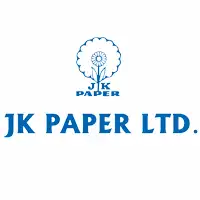in this article we will discuss about 7 types of abnormalities in tpm, in detail. Total Productive Maintenance (TPM) is a methodology used to improve the effectiveness of equipment and processes in an organization. The goal of TPM is to eliminate unplanned downtime, increase productivity, and reduce costs.
However, there are 7 types of abnormalities in tpm, that can hinder the effectiveness of the program. In this article, we will discuss the 7 types of abnormalities that can occur in TPM, including their symptoms and causes.
Introduction
TPM is a comprehensive approach that involves everyone in the organization to improve the efficiency and reliability of the equipment. However, even with a strong TPM program in place, abnormalities can occur that can negatively impact the effectiveness of the program.
By understanding these abnormalities and their causes, organizations can take the necessary steps to prevent them from happening and maintain the effectiveness of the TPM program.
Minor Flaws
Minor flaws refer to small defects that can occur in equipment or processes. These flaws may seem insignificant, but they can lead to more serious issues if left unaddressed. Symptoms of minor flaws may include increased downtime, reduced productivity, and decreased equipment reliability. Causes of minor flaws may include poor maintenance practices, insufficient training, or improper use of equipment.
Unfulfilled Basic Conditions
Unfulfilled basic conditions refer to situations where the basic conditions required for equipment or processes to operate effectively are not met. These conditions may include factors such as proper lighting, ventilation, or temperature control. Symptoms of unfulfilled basic conditions may include increased downtime, reduced productivity, and decreased equipment reliability. Causes of unfulfilled basic conditions may include poor maintenance practices, insufficient training, or inadequate resources.
Inaccessible Places
Inaccessible places refer to areas of equipment or processes that are difficult to access for maintenance or repair. These areas may be located in tight spaces or in hard-to-reach locations. Symptoms of inaccessible places may include increased downtime, reduced productivity, and decreased equipment reliability. Causes of inaccessible places may include poor equipment design or improper installation.
Sources of Contamination
Sources of contamination refer to situations where equipment or processes become contaminated with foreign materials such as dirt, dust, or other debris. Symptoms of sources of contamination may include decreased equipment reliability, reduced productivity, and increased maintenance costs. Causes of sources of contamination may include poor maintenance practices, inadequate cleaning procedures, or improper handling of materials.
Sources of Quality Defects
Sources of quality defects refer to situations where equipment or processes produce products that do not meet quality standards. Symptoms of sources of quality defects may include increased scrap rates, decreased productivity, and decreased customer satisfaction. Causes of sources of quality defects may include poor equipment maintenance, improper process control, or inadequate training.
Unnecessary Items
Unnecessary items refer to materials or equipment that are not required for the production process but are still present in the work area. Symptoms of unnecessary items may include reduced productivity, increased downtime, and decreased equipment reliability. Causes of unnecessary items may include poor work area organization, inadequate training, or improper use of equipment.
Safety Hazards
Safety hazards refer to situations where equipment or processes pose a threat to the safety of personnel or the environment. Symptoms of safety hazards may include increased accident rates, decreased equipment reliability, and increased maintenance costs. Causes of safety hazards may include poor equipment design, inadequate safety procedures, or insufficient training.
Conclusion
n conclusion, TPM is a methodology that can significantly improve the efficiency and reliability of equipment and processes in an organization. However, abnormalities can occur that can hinder the effectiveness of the TPM program. By understanding the seven types of abnormalities discussed in this article and their causes, organizations can take the necessary steps to prevent them
Read More :
- TPM
- What is TPM
- One point lesson
- 12 Steps Of TPM Implementation
- Essential Principles ForLean Manufacturing
Our Clients


























































